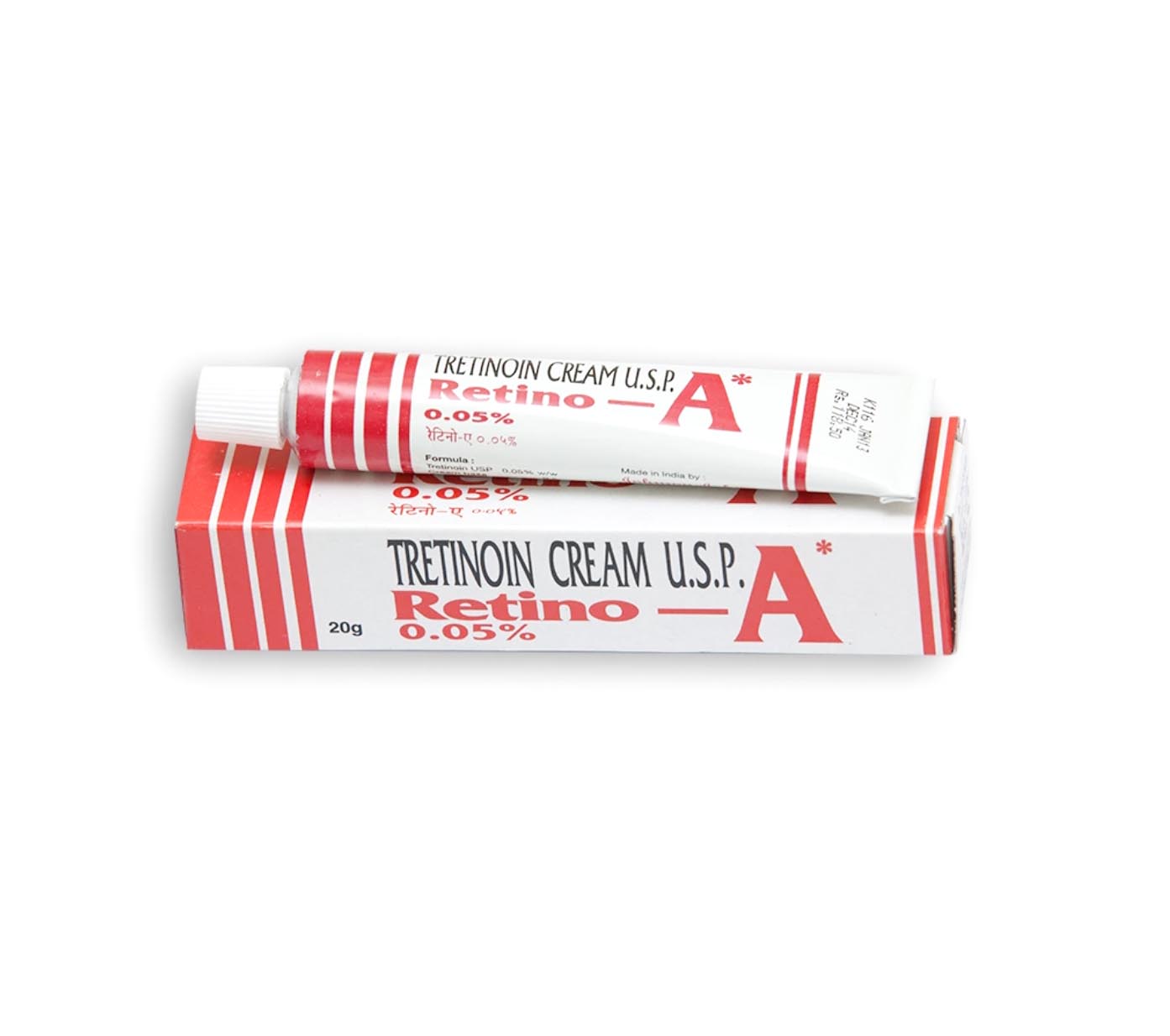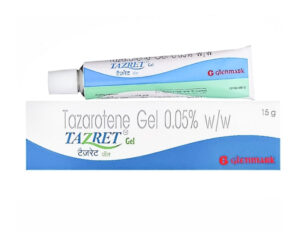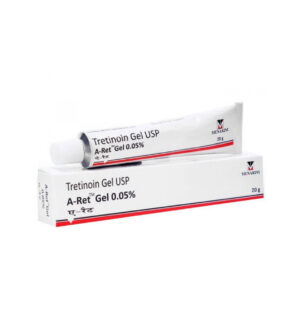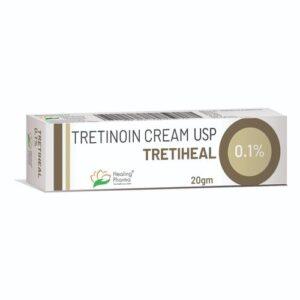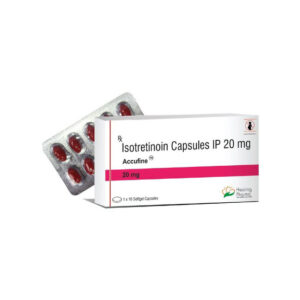Retin-A Cream contains tretinoin, an acne medication that helps remove pimples and blackheads and prevent new ones forming. It also helps reduce age spots and fine wrinkles on the skin.
Retin-A Cream general information
What is Retin-A Cream used for?
Retin-A cream 0.05% is a topical medication used to treat acne vulgaris, to prevent the formation and spread of pimples (papules), spots or whiteheads (pustules) and blackheads (comedones). Retin-A cream 0.05% may also be used to help reduce visible signs of ageing on the face by fading age spots and reducing fine wrinkles, as it promotes skin turnover to replace old damaged skin with new skin.
How does Retin-A Cream work?
Retin-A cream 0.05% contains tretinoin 0.05%, which is an active metabolite of Vitamin A and is a keratolytic medication that affects the way skin cells behave, reducing symptoms of acne as well as age spots and fine wrinkles caused by sun damage and aging. Retin-A cream 0.05% prevents formation of new pimples and blackheads (comedones) by blocking the hardening processes of the outer skin layer (keratinisation and cornification) and increasing the shedding of old hardened skin cells, while at the same time promoting growth of new skin cells. The combined effect of these actions is to speed up skin cell turnover, clear up pimples and blackheads and reduce the spread of acne. This also works for aging or damaged skin where age spots and fine wrinkles are replaced by new skin cells giving the effect of lightening and smoothing the skin.
What does Retin-A Cream contain?
Retin-A cream 0.05% contains the active ingredient tretinoin (0.5mg/g), a topical keratolytic medication used to treat acne.
Treating acne with Retin-A Cream
Retin-A cream 0.05% contains tretinoin which is an active metabolite of Vitamin A and a keratolytic medication that changes the way skin cells grow and behave. Acne forms when over stimulation of the sebaceous glands (oil producing glands in hair follicles), which often happens in response a surge of androgen hormones at puberty, causes pores to become clogged with dead skin, and leads to the formation of new pimples, whitehead and blackheads (comedones), which can become infected and inflamed. Tretinoin in Retin-A cream 0.05% prevents formation of new pimples and blackheads by blocking the hardening processes of the outer skin layer (keratinisation and cornification) and increasing the shedding of old hardened skin cells, while at the same time promoting growth of new skin cells. The combined effect of these actions is to unblock pores and prevent them becoming clogged and inflamed, which reduces the outbreak of new pimples as well as clearing up existing blemishes; al
so to speed up skin cell turnover and help the natural exfoliation process of the outer skin layer, which helps clear up pimples and blackheads and reduces the spread of acne.
Retin-A Cream for age spots
Retin-A cream 0.05% contains tretinoin, a topical treatment that can help reduce visible signs of ageing on the face by lightening age spots, pigmented patches of skin caused by sun damage and general aging, common in people over 55 years. Retin-A cream 0.05% can help speeds up skin turnover by promoting the shedding of old damaged skin and growth of new skin cells giving the effect of lightening the skin.
Retin-A cream for wrinkles
Retin-A cream 0.05% contains tretinoin, a topical treatment that can help reduce visible signs of ageing on the face by reducing fine wrinkles caused by sun damage and general aging of the skin. Retin-A cream 0.05% speeds up skin turnover by promoting the shedding of old damaged skin and growth of new skin cells giving the effect of smoothing the skin. It also promotes skin cells to produce collagen, which keeps skin flexible.
What are the side effects of Retin-A Cream?
The most commonly reported side effects when taking Retin-A Cream include 0.05% include itching, dryness, redness, burning or peeling at the site of application; these effects are usually mild and happen when you start treatment. Less common side effects include changes in pigmentation of skin in the treated area.
When should Retin-A Cream not be used?
You should not use Retin-A Cream if you:
- are allergic to tretinoin or any ingredients in Retin-A Cream
- are pregnant or may become pregnant during use, as tretinoin may cause birth defects
- have acute eczema, as tretinoin can cause severe irritation on eczematous skin
- have a skin condition such as rosacea or perioral dermatitis
- have a personal or familial history of cutaneous epithelioma
- are using any topical skin peeling medication containing sulphur, resorcinal or salicylic acid
- are exposed to sunlight for prolonged periods. If unavoidable use a sunscreen and protective clothing over treated areas to protect the skin.
Should you avoid exposure to sun?
You should avoid or at least minimize unprotected exposure to sunlight, including sunlamps, during the use of Retin-A cream 0.05%, as tretinoin can increase your sensitivity to sunlight and may cause burning. Also if you have sunburn, you should wait until your skin has healed before using Retin-A cream. If you cannot avoid exposure to sun because of your occupation, for example, make sure you use a sunscreen and protective clothing over treated areas to protect the skin.
How should Retin-A Cream be used?
You should apply your Retin-A cream 0.05% to the affected area of the skin once daily preferably in the evening before going to bed. Clean the skin with a mild soap or soap-free cleanser, rinse with water then apply a small amount with clean fingers and rub gently into the skin. Do not use large amounts or apply Retin-A 0.05% more often than directed, as your skin will not clear up faster, instead you may increase the chance for side effects like skin irritation. Avoid contact with the eyes, eyelids, inside of the nose and mouth, which are easily irritated areas, or other areas where treatment is not intended. Do not apply to severely inflamed skin or to open lesions. You should continue to use Retin-A cream 0.1% for the full course of treatment as directed by your doctor. You should see improvement within two to three weeks, but it may take more than six weeks before you see definite beneficial effects.
How long should you take Retin-A Cream?
You should continue to use Retin-A cream 0.05% for the full course of treatment as directed by your doctor. You should see improvement within 2 to 3 weeks, but it may take more than 6 weeks before you see definite beneficial effects.
Missed dose of Retin-A Cream
If you miss a dose of Retin-A Cream take it as soon as you remember, unless it is time to take the next dose, then skip the missed dose. Do not take a double dose.
How should Retin-A Cream be stored?
You should store your Retin-A Cream below 25°C in a cool dry place.
–

